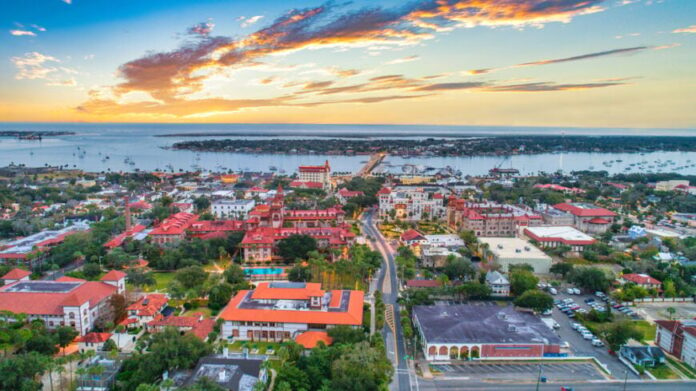Whenever I’m traveling the backroads of the United States, I’m on the lookout for small towns where history hasn’t been boxed up behind glass but is still being hammered out, quite literally, on an anvil.
Historic tinsmith shops are my favorite portals to earlier centuries: the rhythmic tap of metal on steel, the warm tin smell, and artisans who can tell you why a candle mold needs just the right gauge.
In these places, I feel the past rise to meet the present in practical objects—lanterns, coffee pots, or a simple pierced-tin lantern—that were once household essentials.
Each town on this list wraps that hands-on heritage into its character, pairing tin craft with local food, scenic walks, and curious museums so you can make a full day—or weekend—of the trip.
I’ve arranged the towns as a countdown, starting with my newest discovery and ending with the place that first pulled me into this shiny rabbit hole. If you’ve ever wanted to watch sparks fly from a hand-cranked blower or leave with a keepsake stamped by a modern tinsmith, these destinations belong on your map.
19. Nauvoo, Illinois – A Historic Town Where Tin Craft Flourishes

Nauvoo may be best known for its Latter-day Saint heritage, yet I’m always drawn to its restored tinsmith shop where artisans still fashion candleholders using 1840s techniques.
The clatter of wooden looms mixes with the ping of hammers as you stroll a block lined with blacksmiths, coopers, and a working bakery that serves ginger snaps baked from period recipes.
I love popping into the Family Living Center to try my hand at punching tin patterns before walking the quiet riverfront trail that overlooks the Mississippi. Keep an eye out for the lesser-known Baxter’s Vineyards, the state’s oldest winery, which pairs local wine with tales of pioneer life.
Evening brings “Nauvoo Pageant” performances that turn Main Street into a living tableau of frontier stories. All of it sits under skies so big you’ll swear the stars were punched out by a tinsmith’s awl.
The average price for a 3-4 bedroom home in Nauvoo ranges from $200,000 to $300,000, offering a peaceful riverside town with deep historical roots and artisan traditions.
Where is Nauvoo?
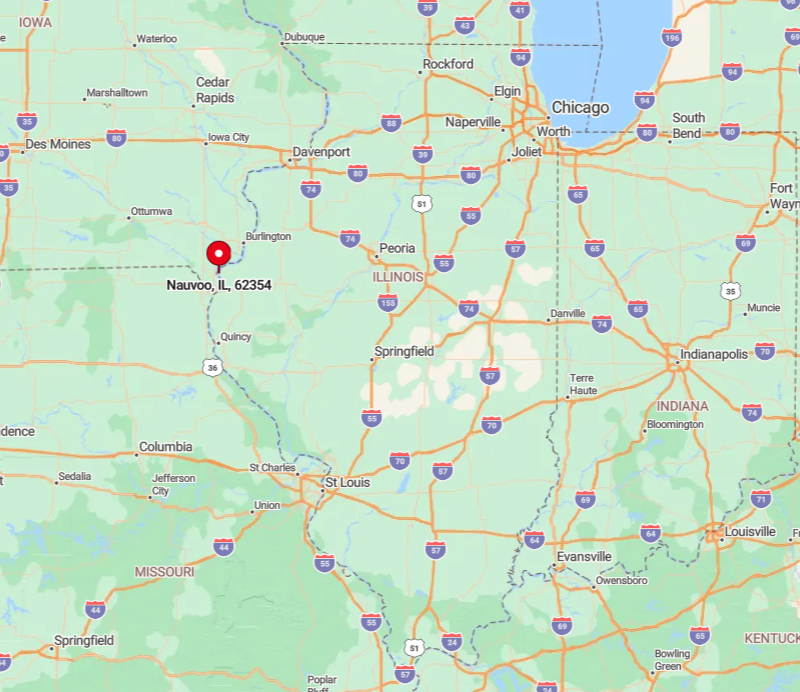
Nauvoo hugs a broad bend of the Mississippi River in western Illinois, roughly midway between Quincy and Burlington, Iowa. Its river-bluff perch not only gave 19th-century traders an ideal shipping spot but also provides visitors with sweeping water views today.
From Chicago, I drive about four hours down I-55 and U.S. 136, though many folks pair it with the Great River Road for a more scenic arrival. Once in town, flat streets and a handy trolley loop make exploring the historic district on foot a breeze.
18. Lititz, Pennsylvania – Quaint Streets and Traditional Tinsmithing
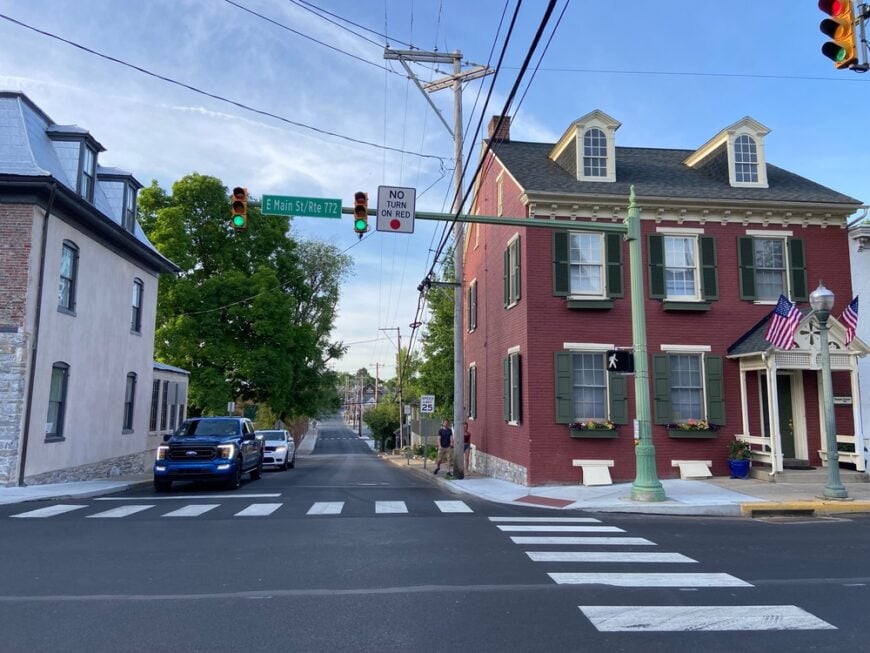
Lititz charms me with its half-timbered façades and the sweet aroma from Wilbur Chocolate, but it’s the Johannes Mueller House that anchors the town’s tinsmithing legacy. Inside, costumed demonstrators craft biscuit cutters and spice boxes, explaining how Moravian settlers blended German precision with colonial ingenuity.
Just around the corner, I duck into Aaron’s Books, a creaky-floored indie shop whose attic occasionally hosts tin-punch workshops. When the weather’s fair, I picnic in nearby Lititz Springs Park, where springhouses once used tin vents to control humidity for food storage.
Every June, the Lititz Craft Beer Fest taps local brews in mugs accented with tin medallions—a small proof that the craft still threads through daily life. If you’re after an unexpected trove, ask about the private collection of tin cookie molds at the Historical Foundation; they’ll usually let curious visitors peek.
Lititz features 3-4 bedroom homes priced between $350,000 and $500,000, making it a charming destination known for its preserved architecture and historic trades.
Where is Lititz?
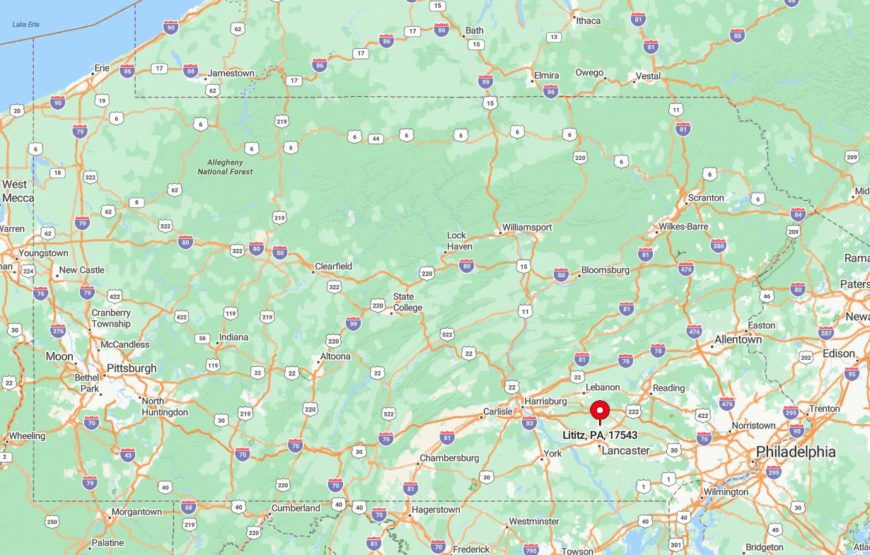
Nestled in Lancaster County’s gentle farmland, Lititz sits about nine miles north of the city of Lancaster and an hour-and-a-half west of Philadelphia. Amish buggies clip-clop past stone barns, underscoring the area’s centuries-old craft culture.
I like arriving via PA-501, a scenic drive that rolls through cornfields and covered bridges before spilling into Lititz’s brick-lined downtown. Once parked, you can reach every attraction in under ten minutes on foot, making the town perfect for slow wandering.
17. Granbury, Texas – Historic Square with Time-Honored Tinsmiths

Granbury’s limestone courthouse square feels frozen in 1890, and the Old Tin Barn on Crockett Street still echoes with the chatter of hammer against stake. I often start my visit at the Hood County Jail Museum, where a re-created celled workshop explains how inmates once produced tin cups for the frontier.
Around the corner, the Brazos Drive-In—the last remaining drive-in theater in North Texas—screens classics, and yes, you can bring a freshly minted tin popcorn bucket from the shop.
During the Harvest Moon Festival of the Arts each October, local tinsmiths set up al fresco forges, showing kids how to swirl rosettes into candle scones. If I need a breather, I’ll hop aboard the Granbury Trolley for a lakefront loop, soaking in views where settlers carted tinware downriver to Fort Worth.
The fusion of Wild West lore, German immigrant craft, and lakeside leisure keeps me lingering longer than planned. Granbury offers 3-4 bedroom homes ranging from $400,000 to $600,000, combining lakefront living with a downtown steeped in 19th-century craftsmanship.
Where is Granbury?
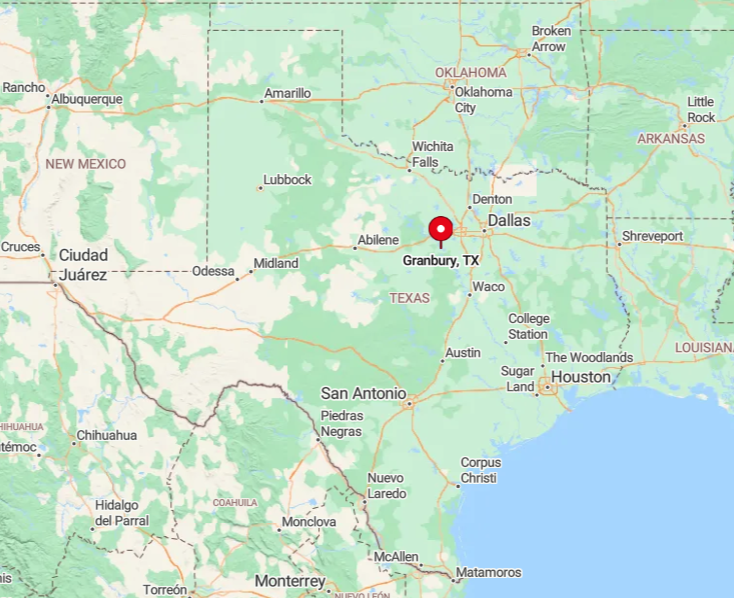
Granbury lies about 35 miles southwest of Fort Worth in the North Texas Hill Country, perched along Lake Granbury’s serpentine shoreline. U.S. Highway 377 delivers a straight shot from the Metroplex, while FM 4 offers a winding alternative past peach orchards and bluebonnet fields.
The small municipal airport welcomes weekend pilots, but I usually roll in by car and park near Hewlett Park for a relaxed stroll to the square. That tight radius means I can bounce between the lake, the theater, and the tinsmith without ever needing to move the car again.
16. St. Augustine, Florida – America’s Oldest City with Historic Tin Crafting
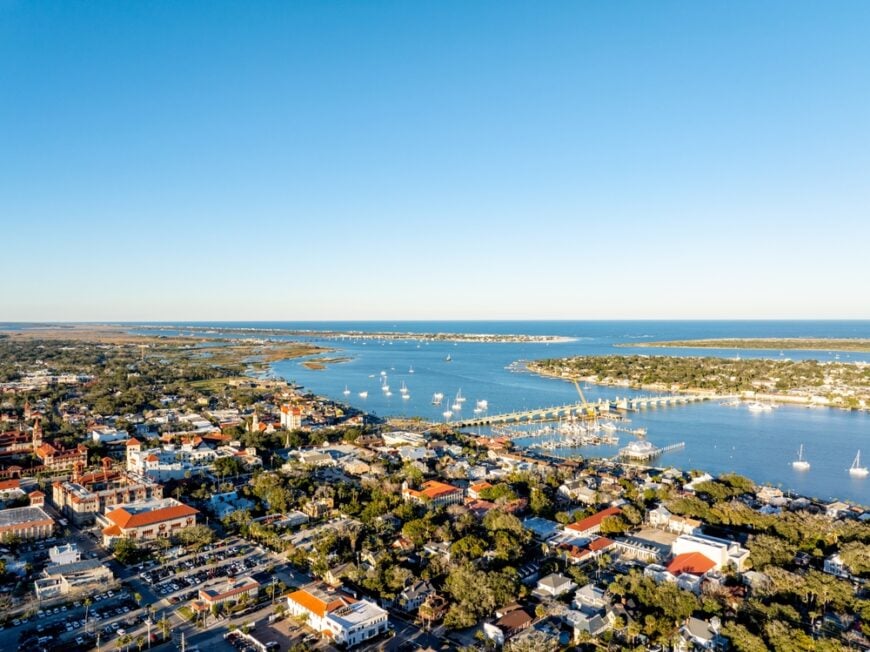
In St. Augustine’s Colonial Quarter, I often find myself hypnotized by the tinsmith shaping lantern reflectors that once guided Spanish soldiers along the Castillo de San Marcos ramparts.
The clink of tools mingles with the salty breeze off Matanzas Bay, reminding me that metal once rusted quickly in this humid climate, so artisans had to invent slick ways to keep tinware gleaming.
Between forge visits, I duck down Aviles Street, the nation’s oldest thoroughfare, where small galleries sell tin-lined shadow boxes inspired by folk Catholic retablos. If you crave a quiet corner, the Mission Nombre de Dios grounds hide a tiny chapel whose roof is fastened with 18th-century tin nails salvaged from a shipwreck.
Nighttime brings the “Ghosts & Gravestones” trolley tour, whose guides brandish pierced-tin lanterns to light moss-draped cemeteries. Every detail whispers how essential tinsmiths were in a coastal town fighting constant corrosion.
St. Augustine features 3-4 bedroom homes priced between $500,000 and $750,000, providing access to centuries-old streets rich with artisanal history.
Where is St. Augustine?
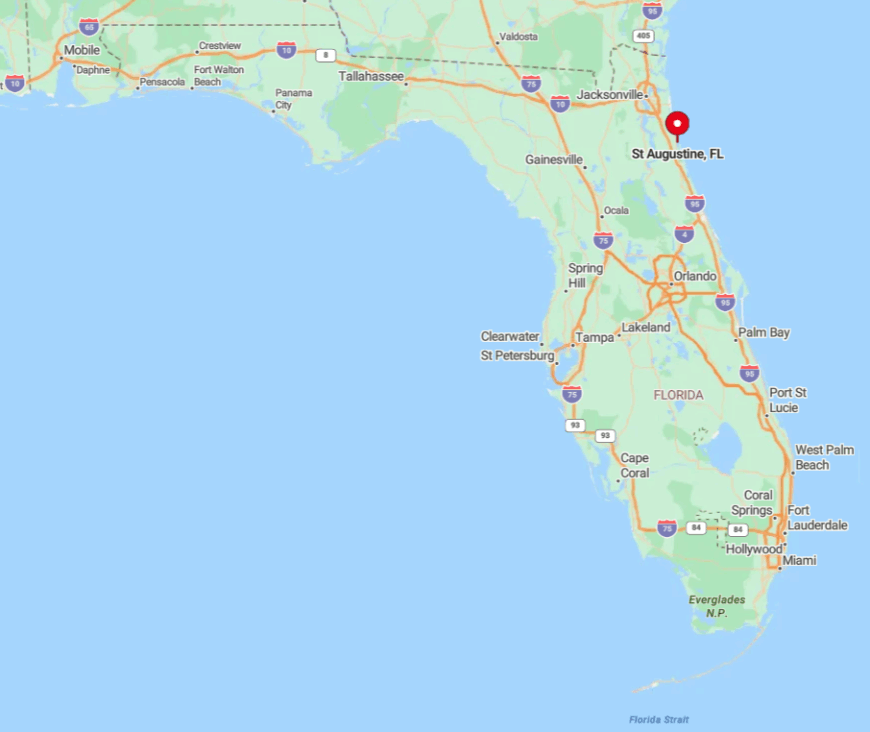
St. Augustine rests on Florida’s northeast Atlantic shore, about 40 miles south of Jacksonville and just off I-95. Its barrier-island setting means you can watch the sun rise over the ocean and set over the Intracoastal without leaving town.
I like to exit at SR-16, which threads past gator-speckled marshes before spilling onto San Marco Avenue’s brick pavers. Once downtown, hop-on trolleys loop every 15 minutes, letting you jump between the Colonial Quarter, Castillo, and trolleys’ end stop at the Tin Shed, a quirky antiques shop brimming with old pierced-tin panels.
15. Columbia State Historic Park, California – A Gold Rush Town of Tinsmiths
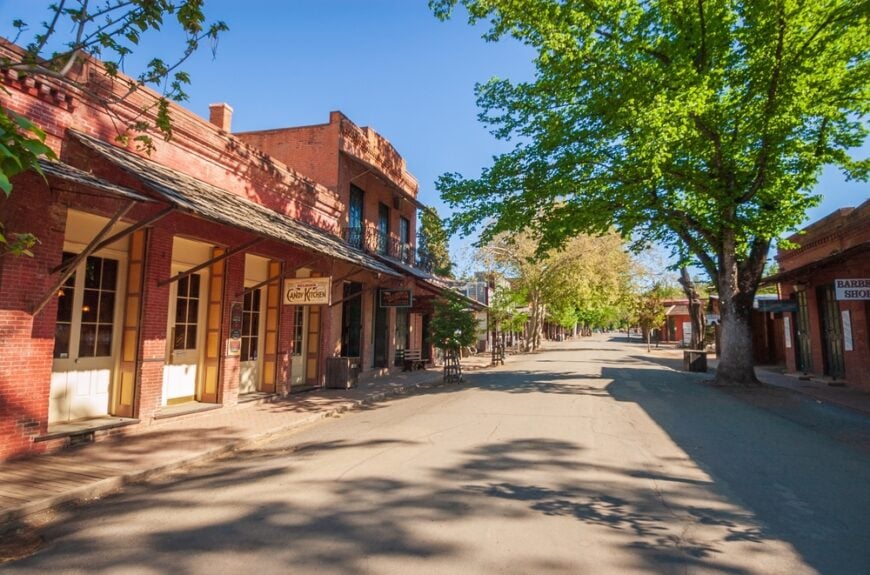
Columbia hits me with sensory overload: horse hooves on hard-packed dirt, the scent of hot sarsaparilla, and the hiss of tin cooling in a water trough outside Nelson’s Columbia Tin Shop.
During living-history weekends, schoolkids pan for gold while tinsmiths craft miners’ reflectors that once clipped to candles in darkened shafts. I recommend slipping behind the Wells Fargo Museum to find a tiny alley where volunteers let you stamp your initials into a tin luggage tag—an easy souvenir that feels authentically 1850.
If you’ve got a sweet tooth, Brown’s Coffee House serves pie on tin plates just like prospectors used. The evening melodrama at the Fallon Theatre often features prop lanterns fresh from the shop, a playful nod to Columbia’s real past.
All this unfolds within a park preserved so thoroughly that modern pavement never intrudes, making every clang of metal feel era-appropriate. Columbia State Historic Park offers 3-4 bedroom homes ranging from $400,000 to $600,000, placing residents in the heart of California Gold Rush heritage and traditional trades.
Where is Columbia State Historic Park?
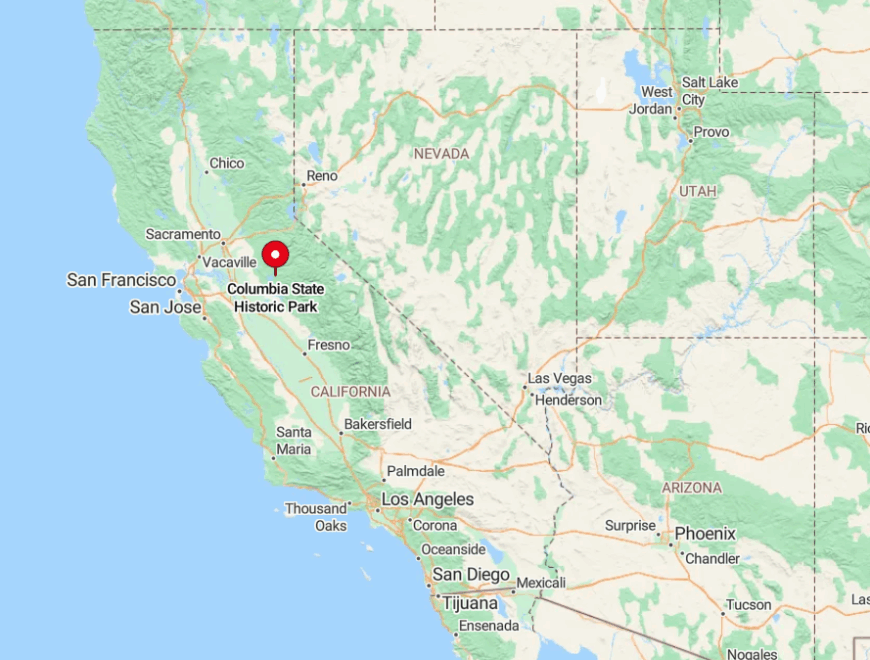
Columbia lies in California’s Sierra Nevada Foothills, five miles north of Sonora along Highway 49—aptly dubbed the “Gold Country Highway.” Winding oak-lined roads climb gently, so I usually steer with windows down to catch the scent of dry grass and chaparral.
If you’re flying in, it’s a two-hour drive east from Sacramento International Airport, with plenty of wineries to break up the trip. Once inside the park, cars stay in lots at the edge, and wooden boardwalks invite you to explore the pedestrian-only historic core at a 19th-century pace.
14. Jim Thorpe, Pennsylvania – The Switzerland of America with Artisan Tinsmiths
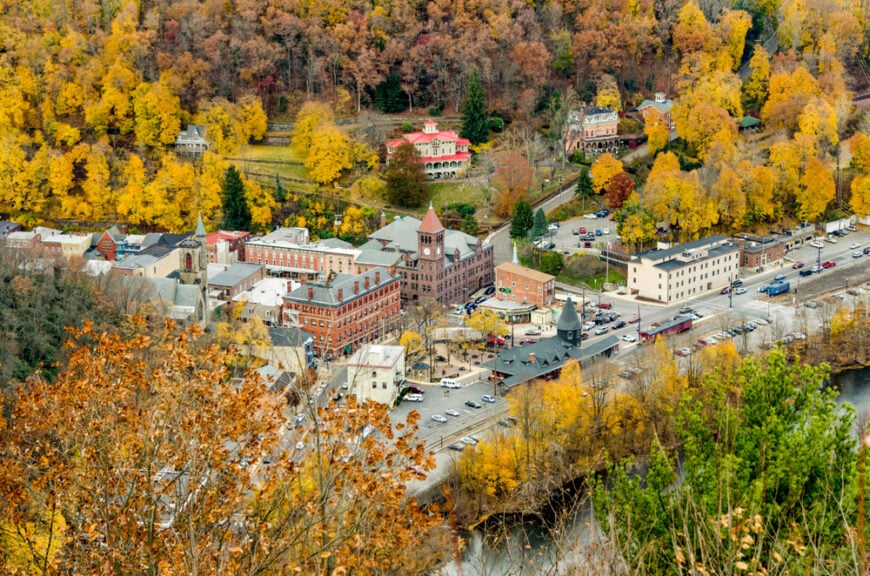
Jim Thorpe’s steep streets and Victorian facades resemble a model train set dropped into a forested gorge, and its tinsmith heritage hides in plain sight at The Mauch Chunk Opera House gift shop.
There, artisans demonstrate how theatrical footlight reflectors were once fabricated from curved tin sheets to brighten 19th-century stages. I like to pair that lesson with a ride on the Lehigh Gorge Scenic Railway, whose vintage coaches gleam thanks to meticulously restored tin ceiling panels.
The Asa Packer Mansion offers another hidden gem: an attic vent crafted from punched tin to cool the coal baron’s elaborate wardrobe. After hiking Switchback Trail, I’ll grab a stout at Molly Maguire’s Pub, noticing tin-lined bar shelves reflecting amber light.
The town balances outdoor adventure with a craft history that still quite literally shines. Jim Thorpe features 3-4 bedroom homes priced between $350,000 and $500,000, blending Victorian charm with a legacy of skilled tinsmithing and craftsmanship.
Where is Jim Thorpe?
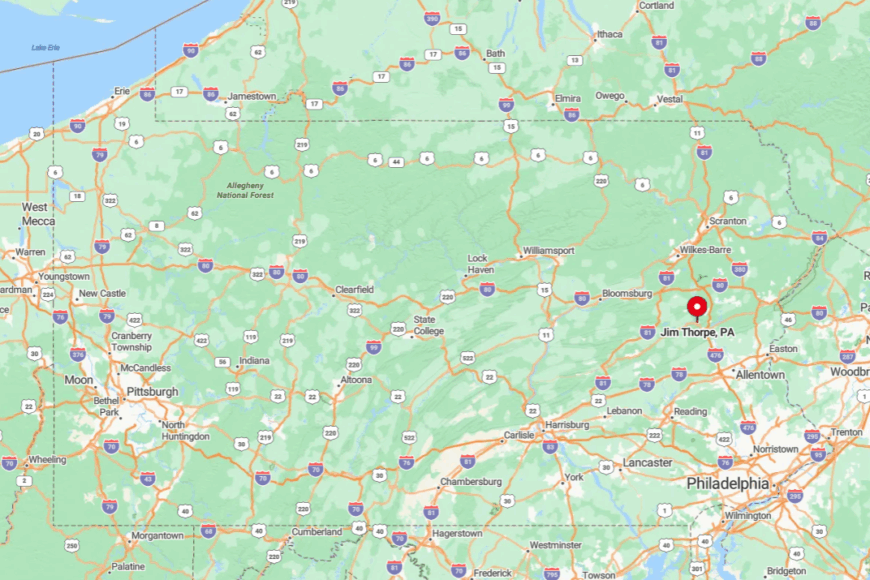
Tucked in Pennsylvania’s Pocono Mountains, Jim Thorpe sits at the convergence of the Lehigh River and Mauch Chunk Creek, about 80 miles north of Philadelphia. Route 903 curls through forested ridges, giving sudden postcard views of spired rooftops below.
If you prefer rail, seasonal weekend trains run from Reading via the Reading & Northern, depositing you steps from Broadway’s tin-trimmed storefronts. Once in town, walking and a free shuttle suffice—streets are narrow and parking scarce, which preserves the village’s old-world ambiance.
13. Arrow Rock, Missouri – Step Into Missouri’s Tinsmithing Past
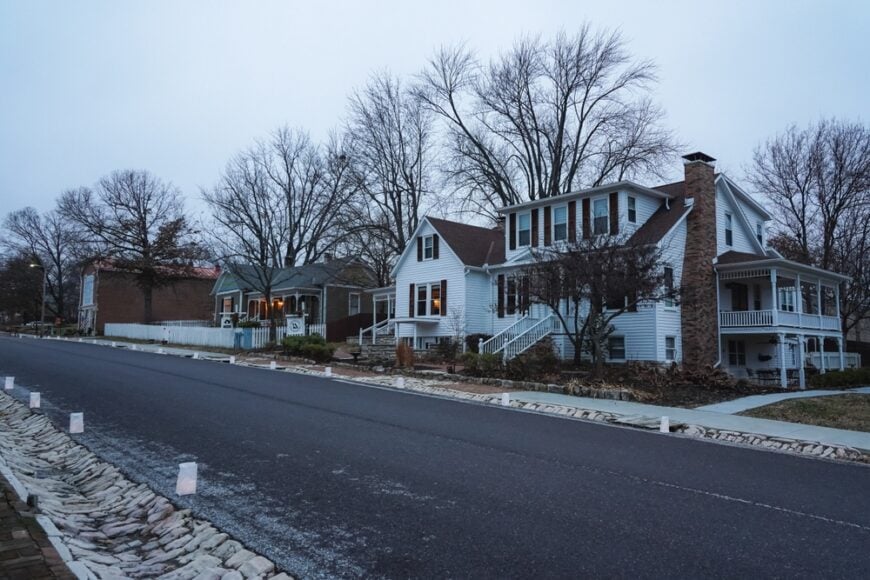
Arrow Rock feels untouched by time, with dusty plank sidewalks and a mercantile where tinsmiths still fashion coffee boilers for Santa Fe Trail reenactors. Inside the Bingham Home, guides explain how artist George Caleb Bingham relied on tin reflectors to capture lamplight for nighttime painting sessions.
After touring the Lyceum Theatre, I usually meander down to Big Soldier Creek, where beavers have built a dam accented by bits of tin flashing stolen from old sheds, a quirky natural-meets-historic sight.
The local café serves skillet cornbread presented on tin plates you can buy next door, making lunch another excuse to take heritage home. Don’t skip the tiny Arrow Rock Pottery studio out back; the owner swaps glazed handles for tin ones on request.
With so many little corners celebrating the metal, every step feels like an Easter egg hunt. Arrow Rock offers 3-4 bedroom homes ranging from $250,000 to $350,000, making it an affordable haven for history buffs and heritage artisans.
Where is Arrow Rock?
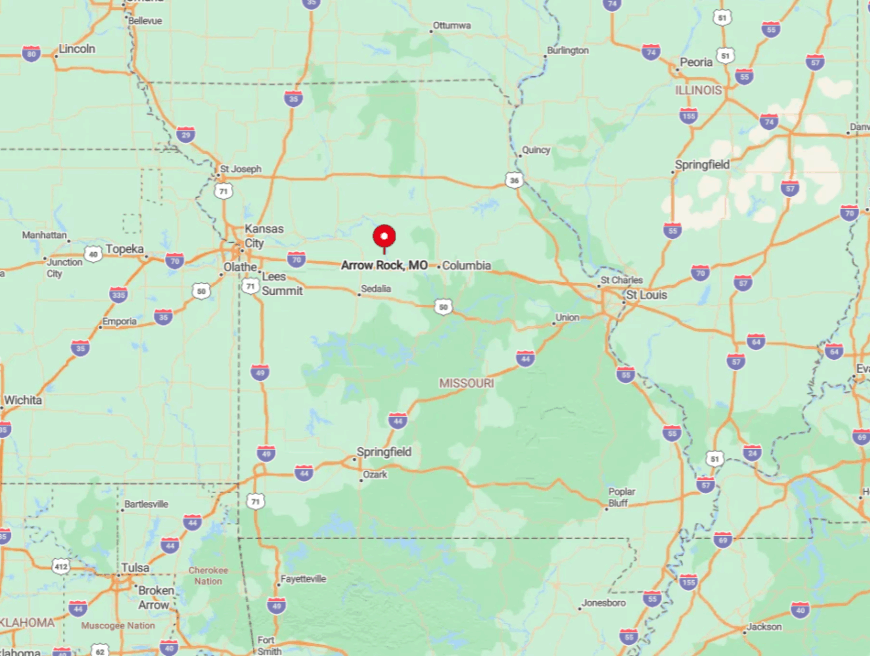
Set on the bluffs above the Missouri River, Arrow Rock lies about halfway between Kansas City and St. Louis, just north of I-70 via MO-41. Its strategic Santa Fe Trail position once funneled goods westward, and today the river backdrop still lends dramatic sunsets over tallgrass prairie.
I often exit at Boonville to enjoy a lazy drive along the Katy Trail before crossing a one-lane bridge into town. Arrow Rock’s compact grid means you can park by the visitors center and reach every site, including the tinsmith, within a ten-minute stroll.
12. Fredericksburg, Texas – German Heritage and Tinsmithing Traditions
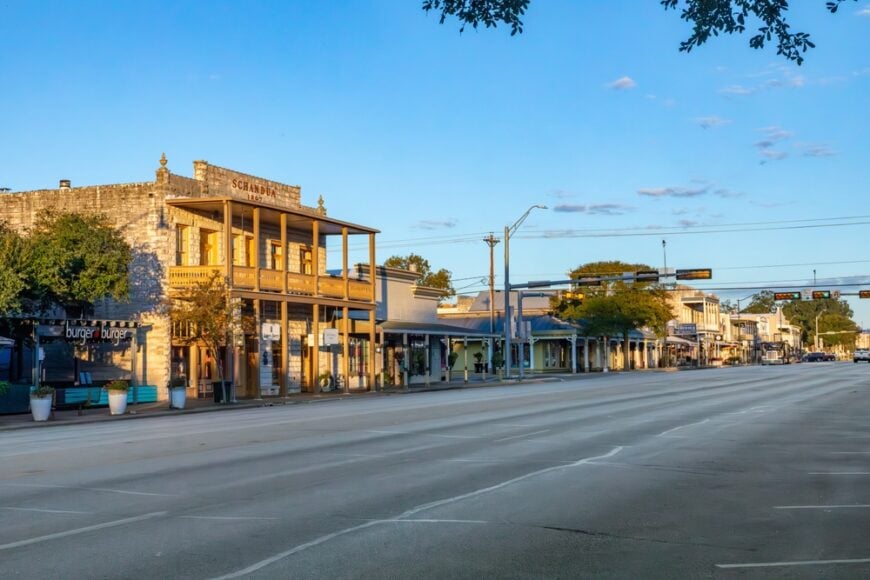
Fredericksburg’s Main Street hums with biergartens, but I’m drawn to the Pioneer Museum’s tinsmithing shed, where German settlers’ box-joint techniques still guide demonstrations.
The Vereins Kirche Museum highlights how early residents clad church steeples with tin to withstand Hill Country storms—look closely and you’ll spot original panels flecked with hand-cut tulip motifs.
Between craft lessons, I sample peach pastries at the Old German Bakery, noticing the tin ceiling tiles repurposed as wall art. If you’re in town for Oktoberfest, artisans sell tin-embossed beer steins alongside bratwurst stalls.
Wine lovers can take the 290 Wine Shuttle, whose stops often display tin-tagged tasting notes dangling from barrels. Fredericksburg manages to blend German precision, Texan hospitality, and frontier resilience in one tidy package.
Fredericksburg features 3-4 bedroom homes priced between $700,000 and $900,000, reflecting its upscale appeal and strong ties to German artisan traditions.
Where is Fredericksburg?
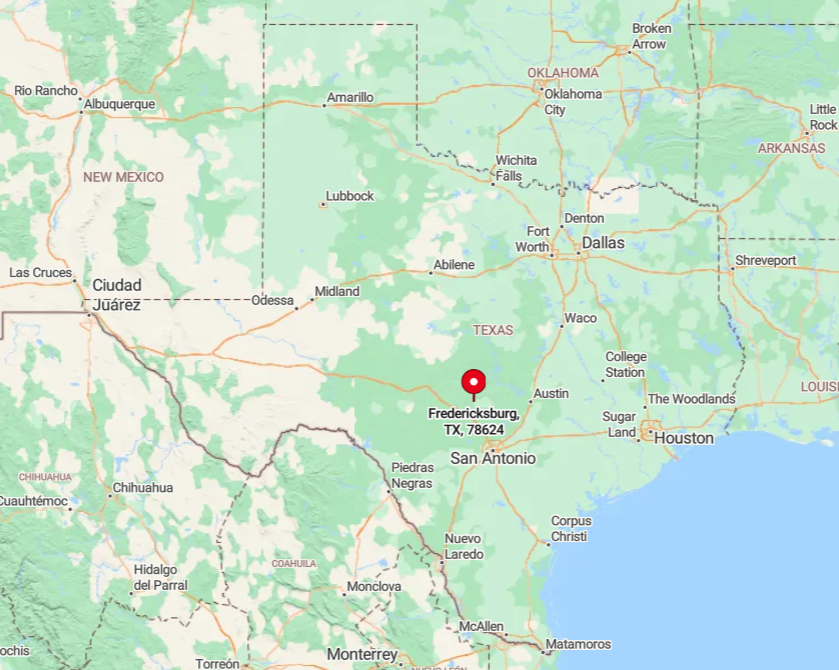
Fredericksburg anchors Texas Hill Country about 70 miles west of Austin along U.S. 290, surrounded by peach orchards and granite domes like Enchanted Rock. I prefer the slower Ranch Road 1 route that parallels the Pedernales River and passes Lyndon B. Johnson’s ranch en route.
The town’s walkable core makes a parked car optional, while the Hill Country Transit District runs a weekend trolley linking wineries and museums. Regional visitors often fly into San Antonio, then enjoy an hour-and-a-half hill-hugging drive to this German-Texan gem.
11. Sandwich, Massachusetts – Colonial Tin Crafting on Cape Cod
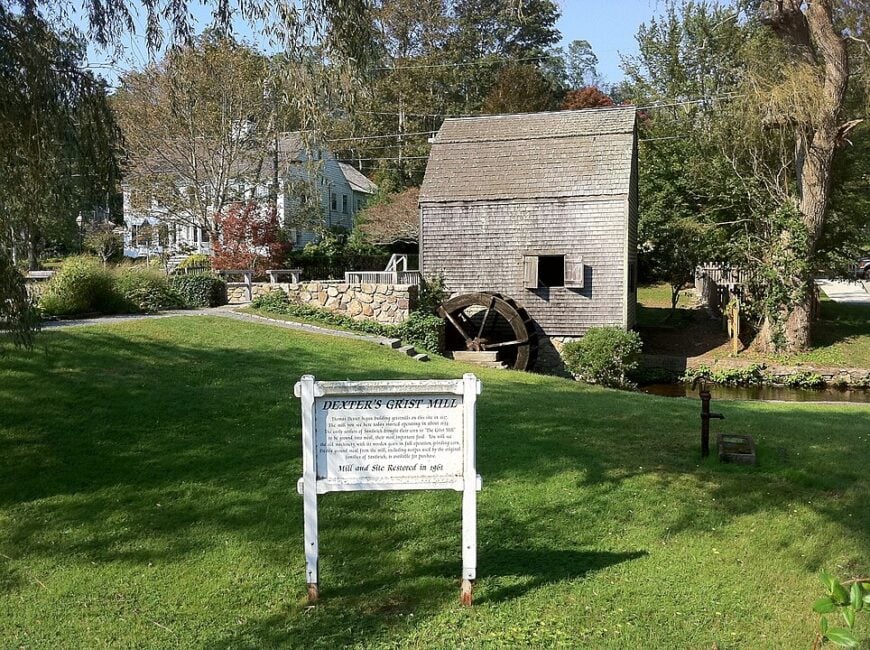
Old King’s Highway guides me into Sandwich, and almost instantly, I’m lured by the Dexter Grist Mill’s waterwheel clanking beside the Green—yet it’s the adjacent Nye Family Homestead where tinsmiths sculpt lanterns meant for salty Cape winds.
The Heritage Museums & Gardens hides a Wampanoag-crafted mishoon (dugout canoe) whose preservation uses tin-lined humidity boxes, a behind-the-scenes tidbit docents love to share.
When the tide’s low, I walk the boardwalk to Town Neck Beach, spotting weathered shanties with tin patchwork on their roofs. Beth’s Bakery sells lobster rolls wrapped in printed tin-foil “newspaper,” a playful homage to local craft.
If timing’s right, I’ll join the Glass & Tin pairing workshop, where you blow a small glass float then cap it with a pierced-tin holder for a nautical lantern. Cape Cod rarely feels so hands-on.
Sandwich offers 3-4 bedroom homes ranging from $600,000 to $850,000, providing coastal beauty alongside a rich history of early American trades.
Where is Sandwich?

Perched at the tip of Cape Cod Canal’s east end, Sandwich is about an hour south of Boston via MA-3 and the Sagamore Bridge. The canal creates a unique microclimate that once required salt-resistant tin roofing, a fact still evident on older homes.
From Logan Airport, I often book the Plymouth & Brockton shuttle, then hop a local CCRTA bus straight into town. Cyclists can ride the 7-mile Cape Cod Canal Pathway to arrive car-free and soak in canal traffic along the way.
10. Galena, Illinois – Historic Tin Shops Amidst 19th-Century Architecture
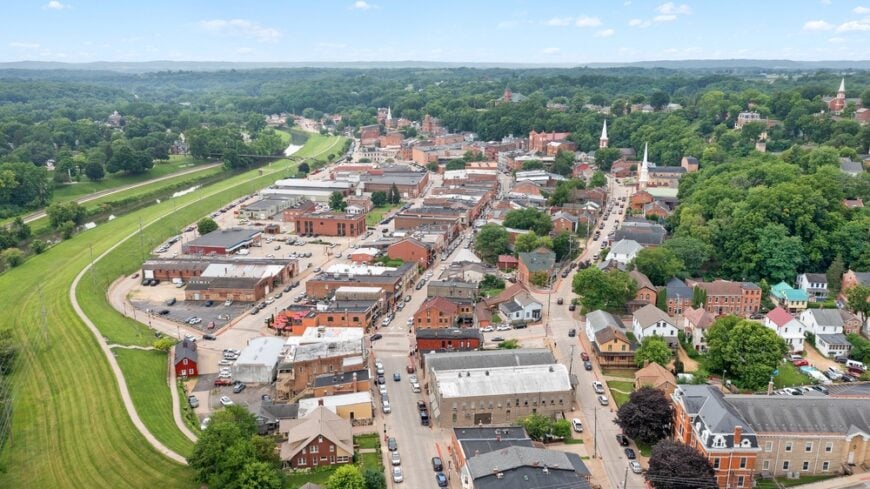
Galena’s sloping Main Street packs more pre-Civil War buildings than any other U.S. downtown, and Tinsmith’s Cottage fits right in, its front window ablaze with candle molds and ornamented coffee pots.
General Grant often shopped here during his local residency, and re-enactors share that anecdote as they forge replica camp lanterns. I love stepping into Otto’s Place for breakfast, where local artists upcycle tin ceiling tiles into rustic table centers.
For a quiet detour, climb the Green Street Steps to Grant Park and trace the river’s bend while hearing church bells echo off tin-clad steeples. Evening ghost walks weave in stories of tinsmith apprentices who etched protective symbols into shop floors—a spooky but charming legend.
The combination of river commerce, hilltop vistas, and metallic craftsmanship gives Galena its distinctive sheen. Galena features 3-4 bedroom homes priced between $250,000 and $400,000, offering a scenic town filled with preserved 19th-century buildings and historic craftsmanship.
Where is Galena?
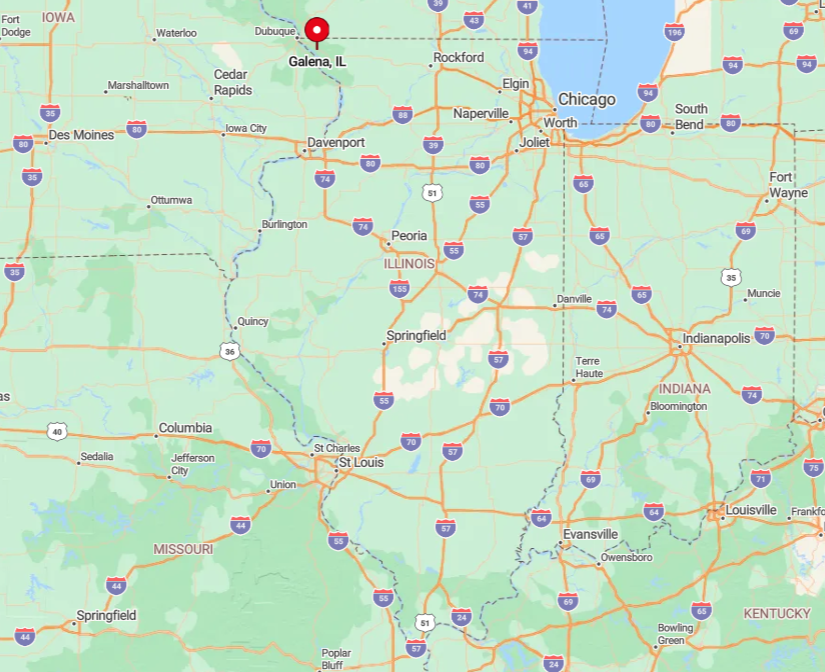
Galena sits in Illinois’ far northwest corner on the Galena River, just eight miles from the Mississippi and close to both Wisconsin and Iowa borders. U.S. Highway 20 sweeps motorists through bluff country dotted with dairy farms and lead-mine remnants.
Chicagoans can catch an easy two-and-a-half-hour drive or hop a direct bus via Tri-State Travel. Once downtown, everything compresses into three riverside blocks, and a seasonal trolley eases climbs to the lofty residential district.
9. Silver Dollar City, Branson, Missouri – An Ozark Mountain Tinsmith Experience
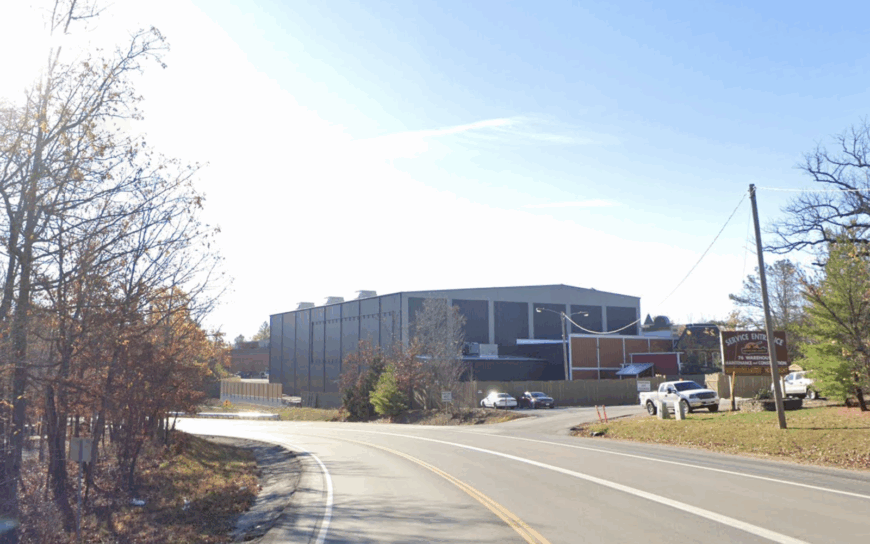
Silver Dollar City might be a theme park, but its 1880s ambiance feels authentic when I’m watching the master tinsmith punch star patterns into Christmas tree toppers. The Heartland Home Furnishings shop sells tin-roof birdhouses reminiscent of Ozark smokehouses, and I never leave without one clanging in my backpack.
Between rides on Outlaw Run, I pause at the Wilderness Church, whose reflective tin sconces give worship a warm glow even on cloudy days. If you visit in autumn, the Harvest Festival showcases “Cowboy Camp,” where tinsmiths craft chuck-wagon plates while storytellers recount stagecoach heists.
Keep an eye out for the hidden Marvel Cave tour; tin candleholders are the only allowed open flames used during select lantern tours. For a park, it maintains a remarkable devotion to historical accuracy.
Silver Dollar City (Branson) offers 3-4 bedroom homes ranging from $300,000 to $450,000, making it a family-friendly location with strong ties to traditional crafts.
Where is Silver Dollar City?
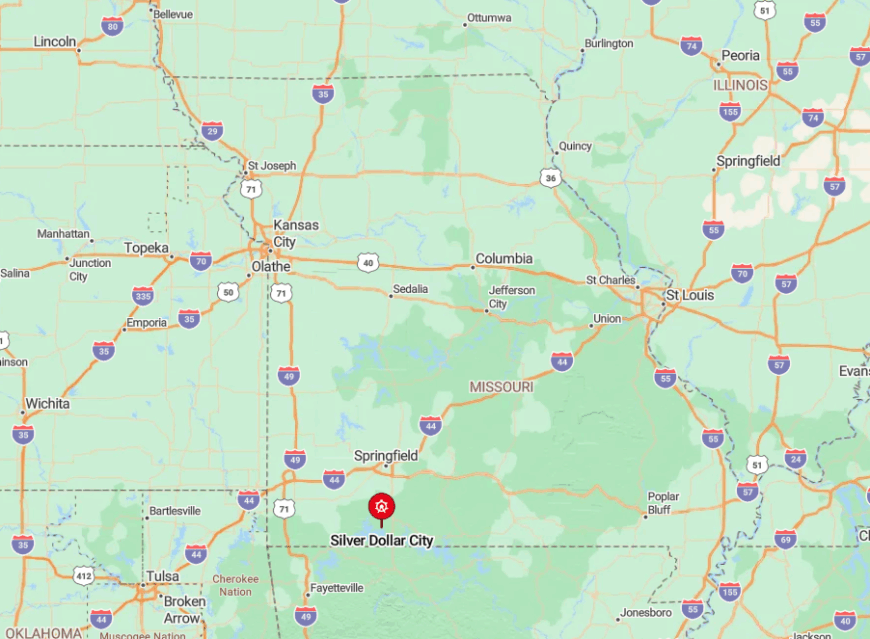
Silver Dollar City perches atop a ridge just west of Branson, Missouri, along State Highway 76 in the wooded heart of the Ozarks. Springfield–Branson National Airport lies 45 minutes north, with shuttle services straight to the park gates.
The hilly terrain once complicated stage travel, which is why the park emphasizes 19th-century wagon-wheel craftsmanship throughout its exhibits. Free trams shuttle guests from sprawling parking lots up to the entrance, but once inside, cobblestone lanes and staircases make strolling part of the immersive journey.
8. Eureka Springs, Arkansas – Victorian Charm and Traditional Tin Crafts
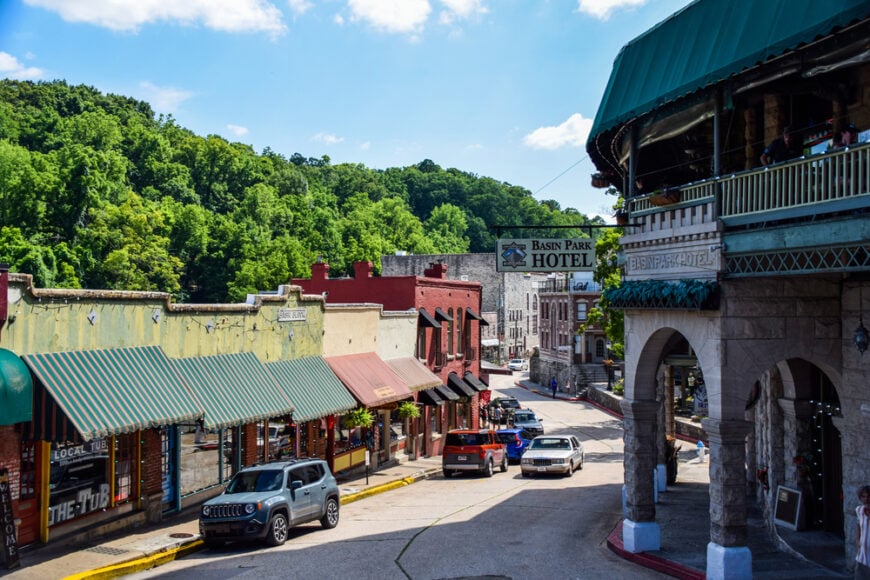
Eureka Springs spirals down steep hillsides like a storybook illustration, and hidden among its limestone walls is the Silly Chile Metalworks studio where tinsmiths adapt Victorian punch patterns to modern spice tins.
The Basin Spring Park often hosts open-air demonstrations; I’ve spent sunny afternoons tapping tin under the watchful eye of local artisan Jim Nelson. A short walk takes me to St. Elizabeth’s Chapel, famous for being entered through its bell tower, and inside, you’ll spot tin-clad hymnboards glinting in stained-glass light.
For something different, ride the 1886 Crescent Hotel ghost tour—your guide carries a pierced-tin lantern rumored to scatter negative energy. Nearby, Black Bass Lake Trail loops past rusting tin flumes from an 1890s waterworks, blending nature with industrial leftovers.
The entire town feels like a pocket of ornate creativity preserved in the Ozark folds. Eureka Springs features 3-4 bedroom homes priced between $300,000 and $400,000, known for its Victorian architecture and artisan spirit.
Where is Eureka Springs?
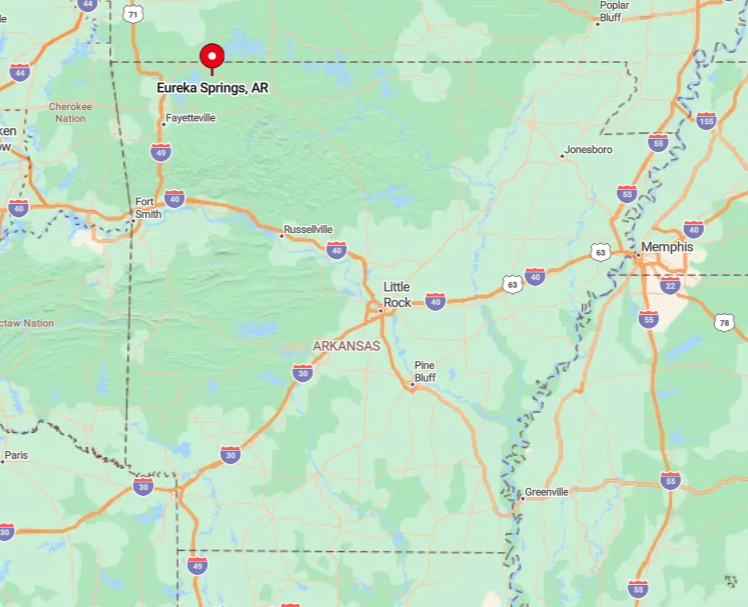
Eureka Springs lies in northwest Arkansas’ Ozark Mountains, about an hour east of Bentonville via winding Highway 62. The terrain is so rugged that streets double back on themselves, creating the only U.S. town where every street is legally uphill both ways.
If you’re not driving, Ozark Regional Transit provides a daily bus from Fayetteville, though most visitors opt for the scenic byways by car or motorcycle. Once there, a vintage trolley system navigates steep lanes, a relief for anyone lugging freshly purchased tinware.
7. Sutter Creek, California – Gold Rush Era Tinsmithing in the Sierra Foothills
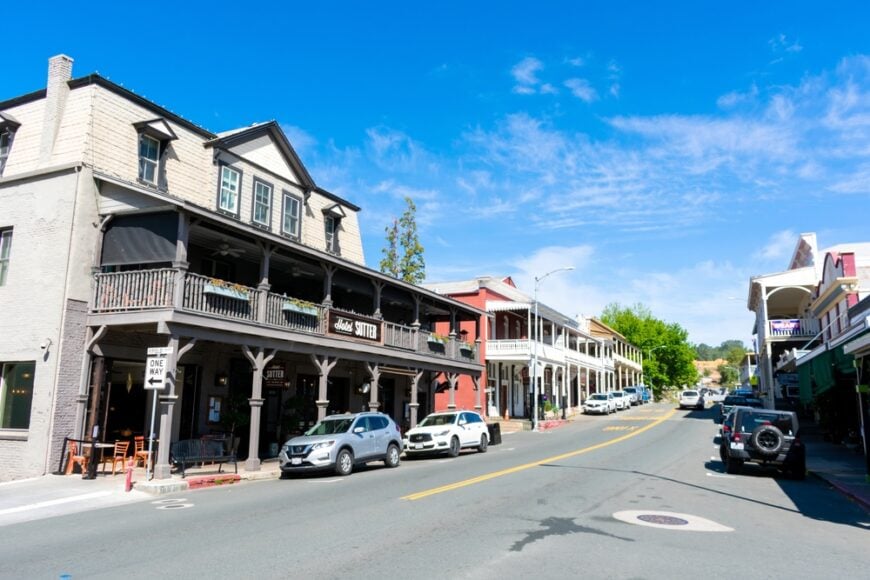
Sutter Creek lives up to its nickname “The Jewel of the Mother Lode,” especially when morning sunlight bounces off the polished tin lamps hanging along Main Street.
I make time for a cortado at the Tin Cup Coffee House—named for the ubiquitous miner’s mug—before antiquing at Tomorrow’s Heirlooms, a shop that upcycles vintage tin ceilings into picture frames.
Fans of quirky facts will enjoy the town’s self-guided “Tin for Ten” walk, pinpointing ten historic buildings still sporting original tin cornices. Evening wine tastings at Bella Grace pair Amador County zinfandel with local cheese served on tin chargers, a nod to the past without feeling kitschy.
There’s gold in these hills, sure, but I’m here for the silver-hued metal. Sutter Creek offers 3-4 bedroom homes ranging from $450,000 to $600,000, perfect for those drawn to Gold Country history and heritage trades.
Where is Sutter Creek?
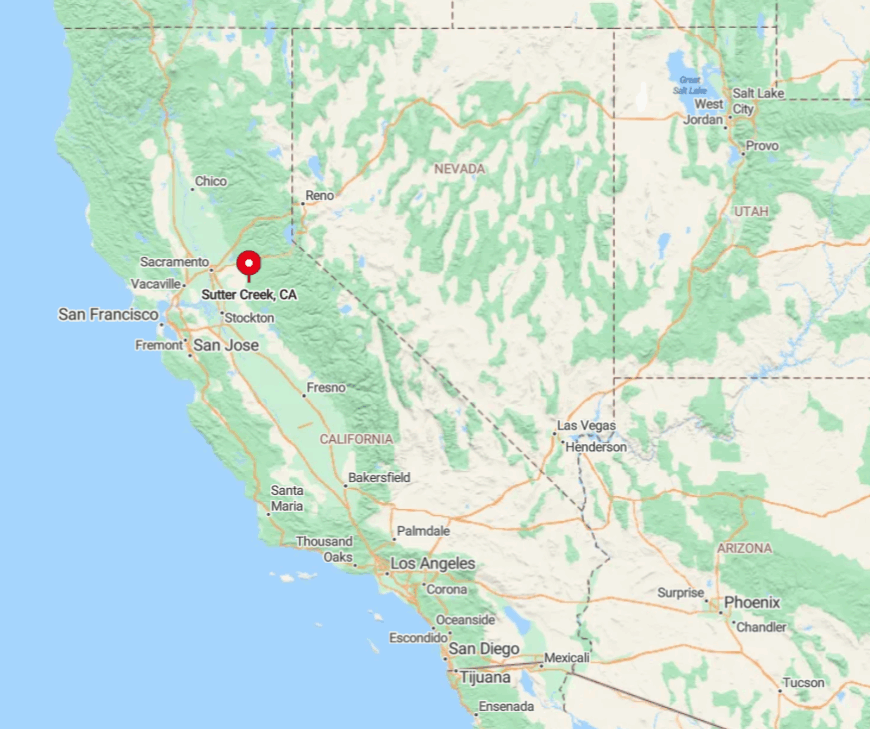
Set along Highway 49 about 45 miles southeast of Sacramento, Sutter Creek nestles in rolling foothills dotted with vineyards and oak groves. That corridor shadowed miners toward Sierra Nevada diggings, so tin goods once traveled the same road you will drive today.
Sacramento International Airport offers the closest major flights; from there, it’s a straight shot east on Highway 16 and 49. In town, angled parking hugs Main Street, and most attractions fall within four easy walking blocks.
6. Harpers Ferry, West Virginia – A Historic Town with Tinsmithing Roots
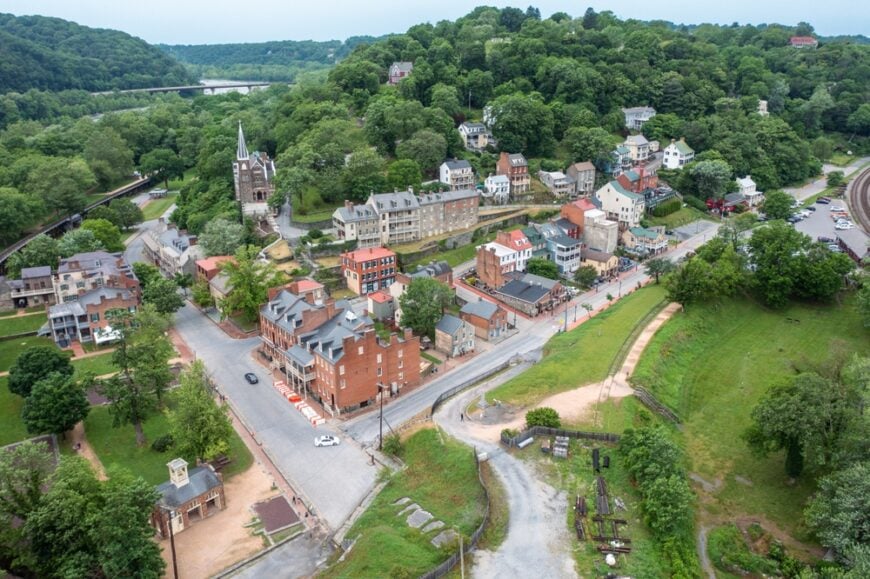
Harpers Ferry straddles a confluence of rivers, rail, and revolutions, but I head straight for the John Brown Wax Museum’s adjoining tinsmith shop, where artisans replicate abolition-era canteens.
The clang of hammers reverberates off sheer cliff walls, reminding me how this narrow gap once amplified industrial noise. I like to hike the Maryland Heights Trail first so I can peer down at the tin-topped roofs shimmering in afternoon sun, then reward myself with house-made root beer served in tin mugs at Almost Heaven Pub.
Lesser-known is the Armory Canal Trail, where interpretive signs reveal how tinware shipments floated to D.C. via flatboats. Each October, “Olde Tyme Christmas” fills cobblestones with carolers holding tin-punched candle tins that cast snowflake patterns on colonial façades.
It’s history you can literally hold. Harpers Ferry features 3-4 bedroom homes priced between $350,000 and $600,000, blending dramatic landscapes with colonial-era craftsmanship.
Where is Harpers Ferry?
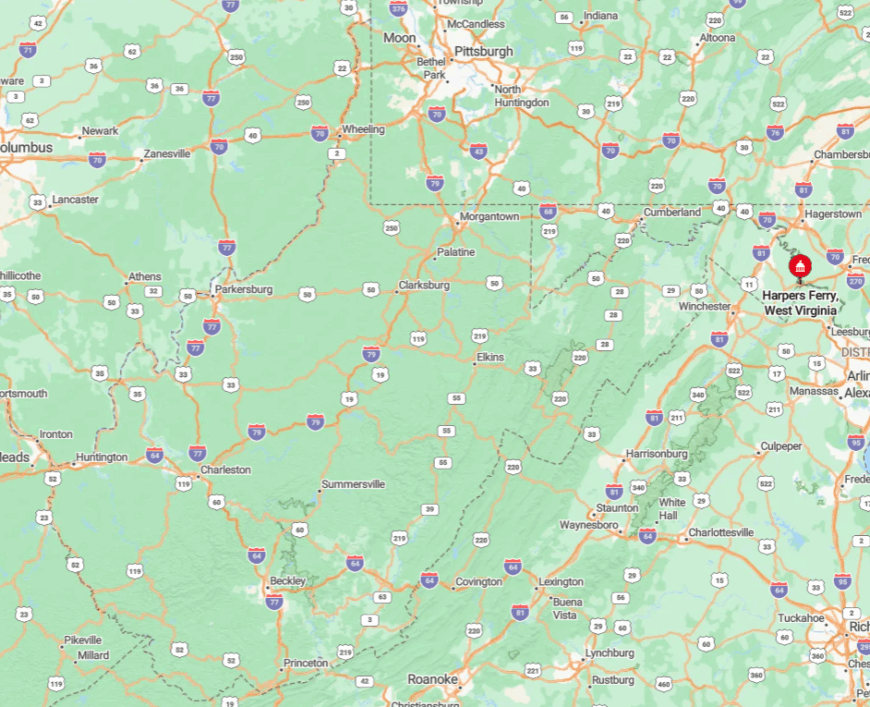
The town sits at the eastern tip of West Virginia, wedged between Maryland and Virginia, where the Potomac meets the Shenandoah. MARC and Amtrak trains stop daily, making it one of the easiest national parks to reach car-free from Washington, D.C., just 65 miles away.
The geography forces a compact layout: steep paths and footbridges connect Lower Town to Bolivar Heights, so wear sturdy shoes. Parking is limited in the historic core, but a free shuttle runs from the visitor center downhill to the tin shop door.
5. Mystic Seaport, Connecticut – Maritime Heritage and Tin Crafting
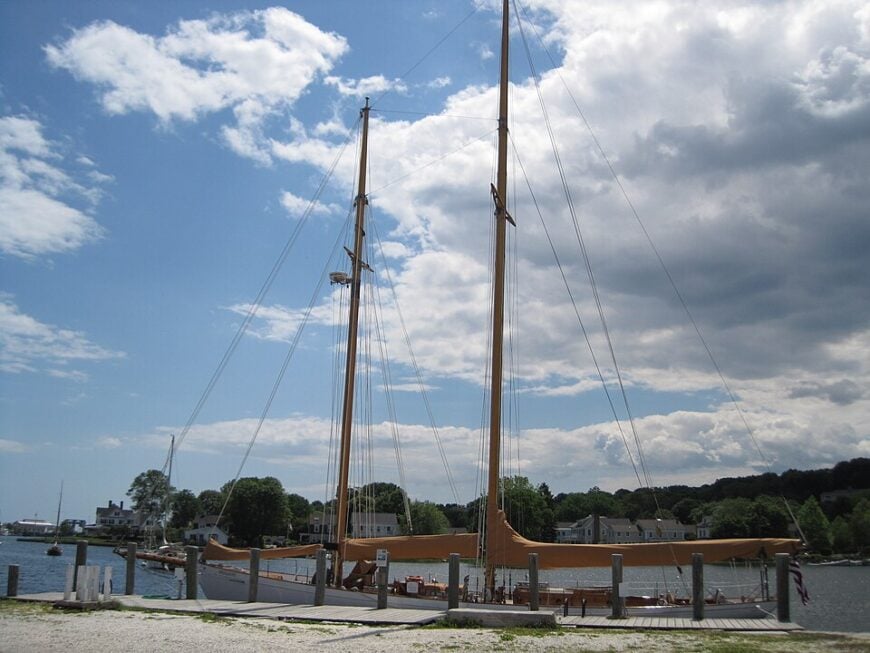
Mystic Seaport’s recreated 19th-century village opens with the clang of a ship’s bell and the softer tap of a tinsmith fashioning whale-oil lamp reflectors in the Small Craft Shed.
I enjoy stepping aboard the Charles W. Morgan whaler, noting how tin-lined bread lockers kept provisions dry on multi-year voyages. Nearby, the Shipsmith Shop contrasts iron hammer blows with the lighter ring of tinwork, illustrating why sailors preferred corrosion-resistant tin mess kits.
On summer evenings, I snag a seat at the Spouter Tavern for chowder served in replica tin plates that keep the soup steaming. Families should hunt for the “Turtle” submersible exhibit; its porthole rims are crafted from locally made tin.
The entire museum anchors tinsmithing within maritime survival, making history feel immediate and purposeful. Mystic Seaport offers 3-4 bedroom homes ranging from $600,000 to $900,000, making it a coastal town with a long tradition of skilled trades and maritime heritage.
Where is Mystic Seaport?

Located on the Mystic River in southeastern Connecticut, the museum complex lies just minutes from I-95 between New London and Westerly, Rhode Island. Trains on Amtrak’s Northeast Corridor stop at Mystic Depot, a pleasant half-mile stroll through downtown to the seaport gate.
The river’s protected harbor once sheltered hundreds of wooden vessels, which is why tin items were crucial—they didn’t rust like iron in salty air. Parking is ample on site, and water taxis run in season, giving a nautical twist to your arrival.
4. Historic Cold Spring Village, Cape May, New Jersey – Artisan Tinsmiths by the Seaside
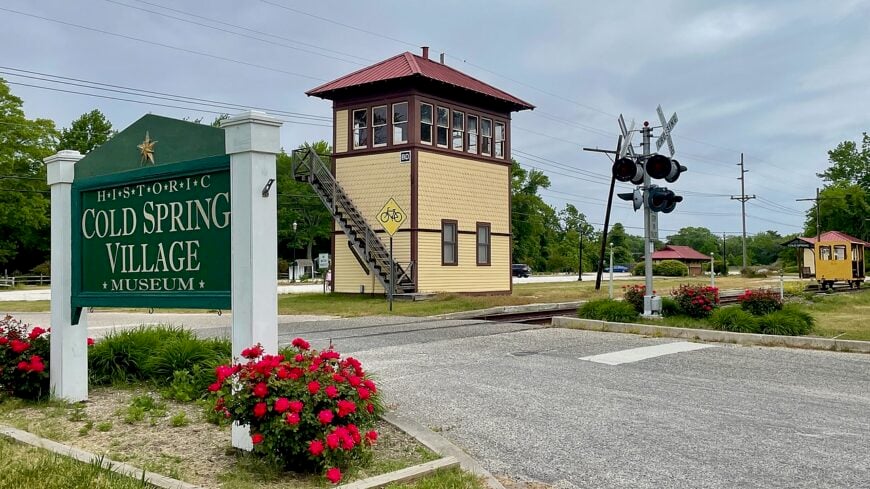
Cold Spring Village may be minutes from Jersey Shore beaches, yet its sandy lanes and clapboard buildings feel centuries removed, especially at the Burleigh Tin Shop where I tried soldering a lantern handle last July.
Docents explain how coastal farmers used pierced-tin pie safes to keep bugs at bay in humid summers, and you can spot originals scattered in house exhibits. Between demos, I rent a vintage bicycle to cruise the pigment-rich nature trail that once connected salt hay fields to shipping wharves.
If rain rolls in, I duck into the Cold Spring Brewery—housed in a barn with reclaimed tin ceilings—for a flight named after historic trades, including the “Tin Tacker” brown ale. Don’t miss the two-room Marshallville School, whose slate chalkboards are framed with tiny tin rosettes hammered by students in 1872.
You’ll leave smelling faintly of ocean and woodsmoke, a lovely mix. Cold Spring Village (Cape May area) features 3-4 bedroom homes priced between $600,000 and $900,000, reflecting the region’s dedication to preserving colonial crafts.
Where is Historic Cold Spring Village?
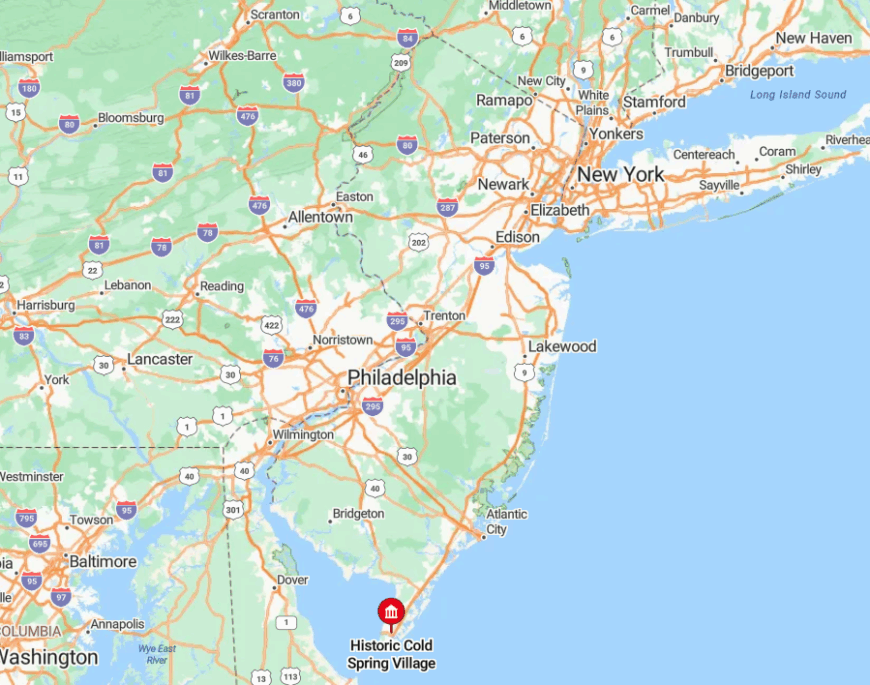
The village sits on Route 9 just north of Cape May, roughly 50 miles south of Atlantic City along the scenic Garden State Parkway. Its low-lying coastal plain meant tin roofs were favored to shed nor’easter rains, a fact interpreters eagerly note.
From Philadelphia, I enjoy the two-hour drive across the Delaware River and down through the pine barrens before hitting salt marsh views near Seaville. Plenty of on-site parking exists, and Cape May County’s “Fare Free Trolley” stops at the entrance in summer, handy for beach-bound visitors.
3. Old Salem, North Carolina – Moravian Craftsmanship Comes Alive
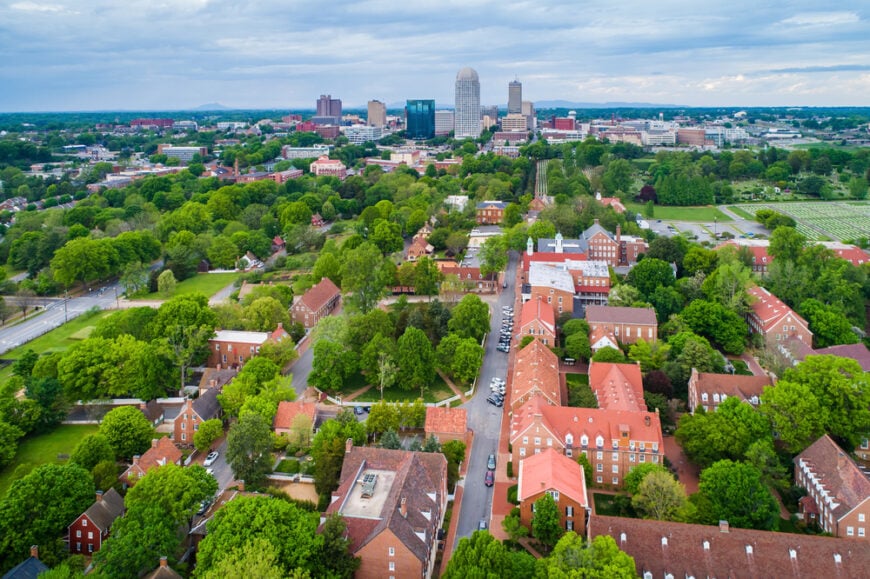
Old Salem’s cobbled lanes guide me to the T. Vogler Tinsmith Shop, where every clang seems to echo the Moravian hymn drifting from St. Philips Church. Demonstrators craft intricate cookie cutters shaped like stars of Bethlehem, then let visitors emboss their initials—a personal highlight of mine.
I wander past Gardens of Wachovia, where herbs grow in tin-edged raised beds replicating 18th-century designs thought to deter rodents. At Muddy Creek Café, I sip Moravian sugar-cake latte served in tin-sleeved glass jars that keep fingers cool.
Hidden behind the Single Brothers’ House is a rain barrel sheathed in tin staves, an early example of recycling that modern sustainability buffs should appreciate. Old Salem marries spiritual heritage with utilitarian craft in a way that feels grounded and warm.
Old Salem (Winston-Salem) offers 3-4 bedroom homes ranging from $350,000 to $500,000, placing residents in a living history village known for its Moravian tinsmithing.
Where is Old Salem?
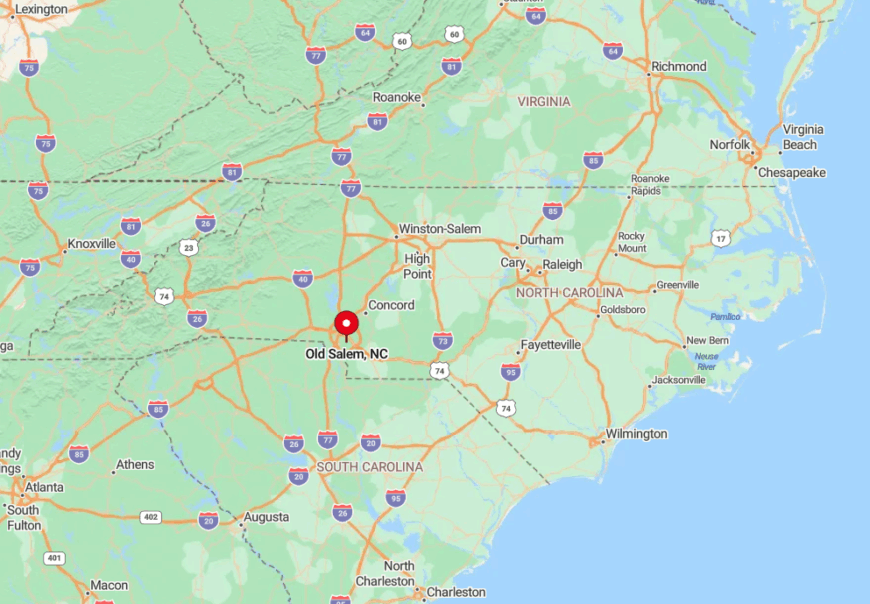
The district sits just south of downtown Winston-Salem, North Carolina, and is easily accessed via I-40 or U.S. 52. Piedmont Triad International Airport lies 25 minutes away, and the city’s transit authority runs buses that stop at Salem Avenue.
Old Salem’s hilltop perch once protected it from Yadkin River floods, and its grid remains compact enough to tour entirely on foot. Free street parking flanks the visitor center, where a footbridge lifts you straight into the 18th-century streetscape.
2. Eastfield Village, Nassau, New York – Discover 19th-Century Tinsmithing Traditions
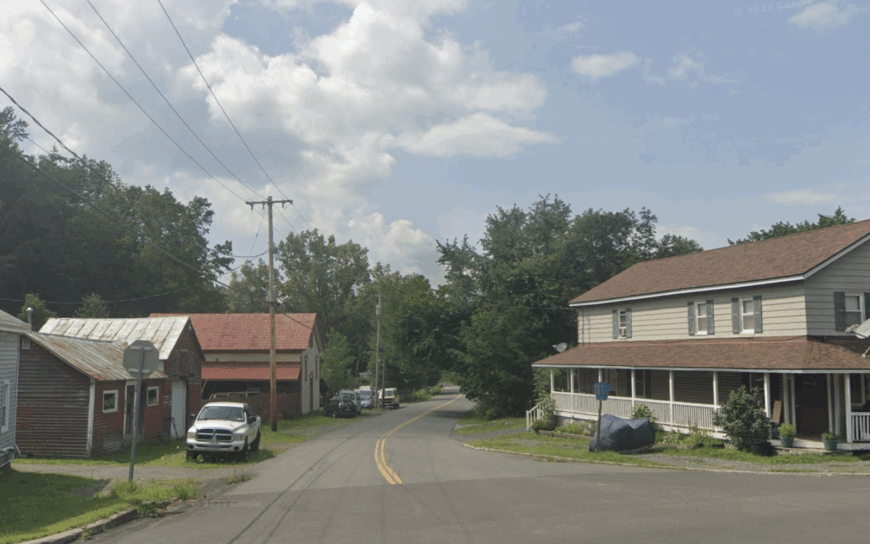
Eastfield Village isn’t a typical tourist site; it’s a collection of rescued 18th- and 19th-century buildings where, during summer workshops, tin artisans live and work just as their predecessors did.
I signed up for a three-day “Tinware for the Hearth” class and learned to rivet a coffee pot by lamplight, sleeping in a tavern room where tin candle sconces flickered against hand-hewn beams.
Evenings find participants sharing chowder around a brick hearth, bowls kept warm by nested tin covers borrowed from the teaching shop. The village library hides a rare 1844 “Seymour and Peck Tinware Catalogue,” which you can thumb through with gloved hands—a thrill for any craft geek.
Out back, bees buzz around a tin-roof apiary whose hexagonal pattern mirrors the honeycomb, a clever 19th-century invention. The immersive setting makes time blur delightfully.
Eastfield Village (Nassau area) features 3-4 bedroom homes priced between $300,000 and $450,000, offering small-town charm and a deep connection to early American trades.
Where is Eastfield Village?
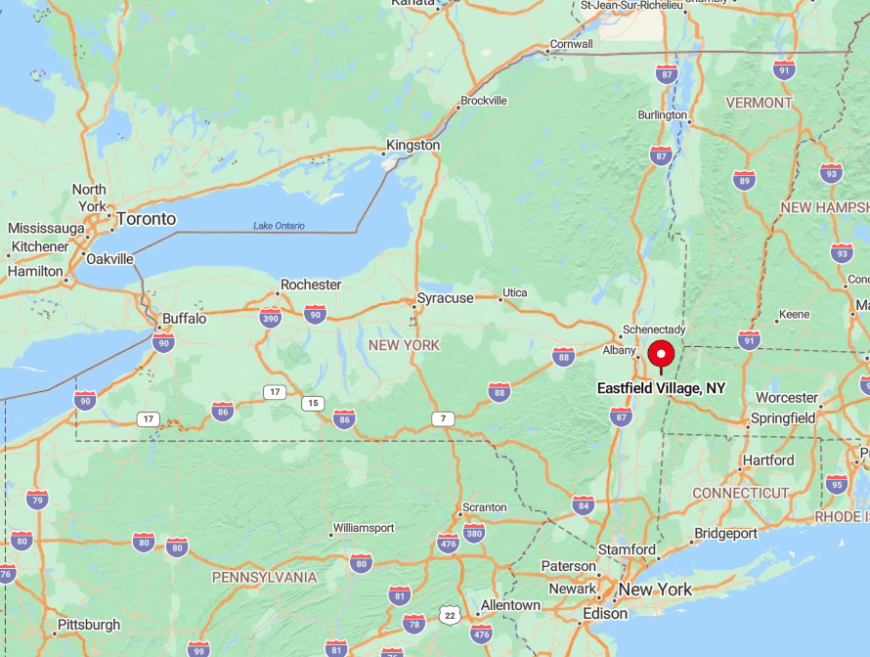
Eastfield lies near Nassau in New York’s Rensselaer County, about 25 minutes east of Albany via U.S. 20. Rolling hills along the Massachusetts line create a pastoral backdrop that feels far from the Thruway’s bustle.
Because the village opens mainly for pre-registered courses and events, you’ll need to arrange gate access in advance; GPS coordinates are provided upon registration. Most visitors drive, but Amtrak’s Albany–Rensselaer station, plus a short ride-share, makes a car-free journey feasible.
1. Colonial Williamsburg, Virginia – Step Back in Time at an 18th-Century Tinsmith Shop
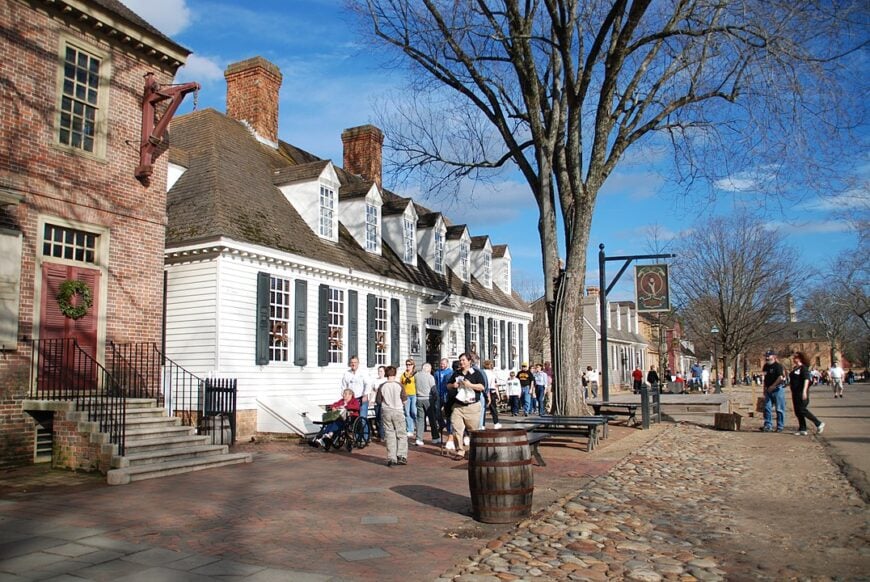
Colonial Williamsburg remains my gold standard for living-history tinsmithing; the Anderson Shop rings with steady beats as artisans craft lantern shades destined for site-wide use.
I’ve spent entire mornings peppering smiths with questions about dovetail joints before wandering Duke of Gloucester Street with a still-warm tin cup holding hot chocolate.
The DeWitt Wallace Decorative Arts Museum displays ornate pierced-tin hand screens that once shielded ladies’ faces from fireplace heat—a tiny detail I never see elsewhere. When hunger strikes, King’s Arms Tavern serves savory pies on replica tin chargers, encouraging diners to appreciate the craftsmanship under their lunch.
Evening programs like “Revolutionary City” rely on tin reflectors to illuminate street theater, enveloping spectators in candlelight’s soft glow. The seamless integration of craft, cuisine, and storytelling makes every visit feel newly minted.
Colonial Williamsburg offers 3-4 bedroom homes ranging from $400,000 to $600,000, immersing residents in a world where traditional craftsmanship is still celebrated daily.
Where is Colonial Williamsburg?
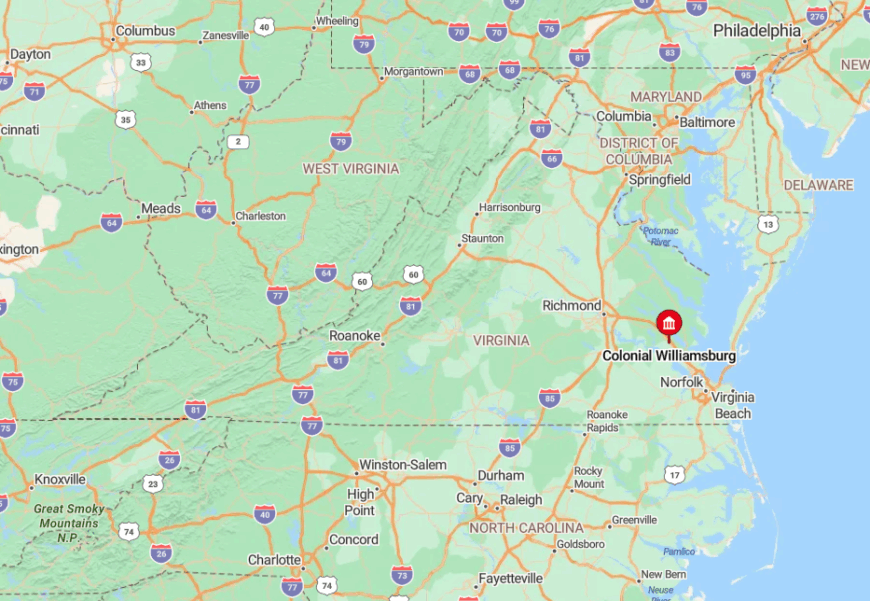
Colonial Williamsburg sits in Virginia’s Historic Triangle, midway between Richmond and Norfolk along I-64. The Tide regional train and Greyhound buses stop at the adjacent Williamsburg Transportation Center, allowing painless car-free access.
Its inland Tidewater setting spared it from the worst Atlantic storms, which is why so many original tin roofs survive. Once on site, free shuttle buses loop through the 300-acre historic area, though I prefer to walk the shell-graveled lanes and let history unfold at a pedestrian pace.
